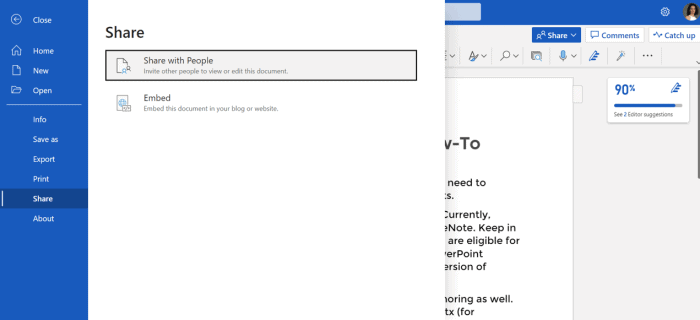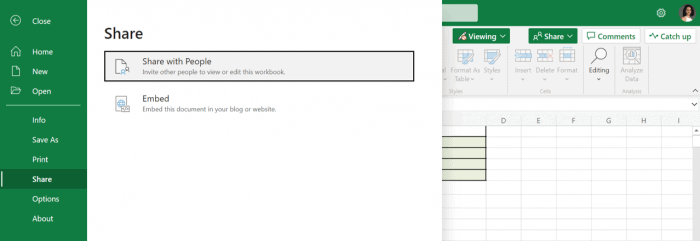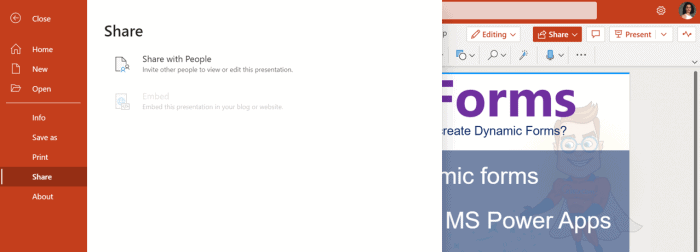SharePoint has many benefits and features that make it a favorite real-time document collaboration tool among organizations. For example, shared documents and microsites make sharing files and data across teams and departments incredibly easy.
But one feature really demonstrates the collaboration power of SharePoint, and that’s co-authoring. With it, multiple people can work on the same document simultaneously — opening up a world of new possibilities for teamwork and productivity.
Here’s how SharePoint co-authoring works and how you can use it in your team.
What is Co-Authoring in SharePoint?
Co-authoring is the feature that allows simultaneous editing in SharePoint apps such as Microsoft Word, Excel, and PowerPoint. For example, two different employees from different departments can revise the same document with co-authoring. Microsoft Office 365 (SharePoint Online) and all versions after Office 2010 support co-authoring.
The main benefit of co-authoring is that it enables real-time document collaboration from multiple authors much quicker. This eliminates the need to edit a file individually then pass it to others for edits, which takes up a lot of time. Co-authoring allows revisions in real time, which in turn will drastically improve the speed and quality of your work.
In addition, co-authoring has powerful versioning features. Every change on the document is logged and attributed to each user. This makes it possible to revert to previous edits should you wish to.
SharePoint Co-Authoring: A How-To Guide
Before you can begin co-authoring in SharePoint, you need to determine first if you meet the minimum requirements.
First, you need software that supports co-authoring. Currently, these are Microsoft Word, Excel, PowerPoint, and OneNote. Keep in mind, however, that only certain devices and versions are eligible for SharePoint co-authoring. This includes Word and PowerPoint versions after Office 2010 and the latest mobile app version of Excel.
Only modern file formats are compatible with co-authoring as well. This includes .docx (for Word), .xlsx (for Excel) and .pptx (for PowerPoint).
Finally, you need to change permissions to enable multiple authors to work on the document.
Strictly speaking, you also need shared storage space for co-authoring to work. Naturally, it’s SharePoint storage space by default. However, you can also use other storage platforms like OneDrive for co-authoring.
Co-authoring Offline
Co-authoring also works when you are offline, although you won’t be able to see changes in real time. Instead, any changes you make will be continuously logged on your end. Then, when you go back online, all changes from other co-authors will sync.
However, it’s possible that two or more co-authors worked on the same section while offline. When this happens, a pop-up message will notify you that there is a conflict, and you will be able to resolve it.
Versioning
Before we delve into the details, there is one important feature that goes hand-in-hand with co-authoring: versioning. This ensures that all changes are properly tracked and attributed to the correct user.
As a rule, documents are saved regularly to capture all the changes properly. The user that made changes last before the file was saved will have their name appear on that version history.
With that out of the way, here is how to enable SharePoint co-authoring on each supported app.
Document Co-authoring in Word
SharePoint simultaneous editing of Word documents is one of the most common examples of co-authoring. When this happens, you will see the changes of all your other co-authors as they are happening.
To enable co-authoring in Word, click on the File menu, then Share. You have two options: Share with People and Embed. The latter option allows you to publish the document to a blog page or website, which isn’t what we are after.
So, instead, click on Share with People. This will bring up a pop-up box where you can send an invite link to the users you wish to co-author.
Once people are in, you will see a notification appear on the right corner of your window, indicating the number of users working on the document. You’ll also see their names on colored cursors, indicating which area of the document they are highlighting.
To prevent conflicts, any paragraph you are working on will be locked from other users, thus ensuring you are the only one making changes on that part of the document.
Spreadsheet Co-authoring in Excel
Co-authoring in Excel works roughly the same as with Word. You will also see a notification in the upper right corner of the window. In addition, it will also highlight which cells other users are working on.
So how can multiple users edit an Excel spreadsheet at the same time in SharePoint? To do so, select File, then Share, and lastly, click Share with People. You can then send an invite link to people you want to co-author with.
Presentation Co-authoring in PowerPoint
As expected, co-authoring in PowerPoint will also show you all users currently accessing your PPT file. In addition, you can also see changes live, together with the name of the user who made them.
Same as with in Word and Excel, click on the Share with People option to invite people as co-authors in your PowerPoint presentation.
OneNote Co-authoring
To enable co-authoring in OneNote, select the Share button and then Share with People to allow you to send invitation links. Note that co-authoring is compatible with both the desktop and browser versions of OneNote.
Feel the Power of SharePoint with KWizCom
Co-authoring is just one of the many powerful features of SharePoint. If you are using SharePoint for your work, make it work for you. Unlock more capabilities with SharePoint project management, using KWizCom’s add-ons, tools, and web parts to maximize productivity. Browse our selection of SharePoint solutions today or contact us for more details.







